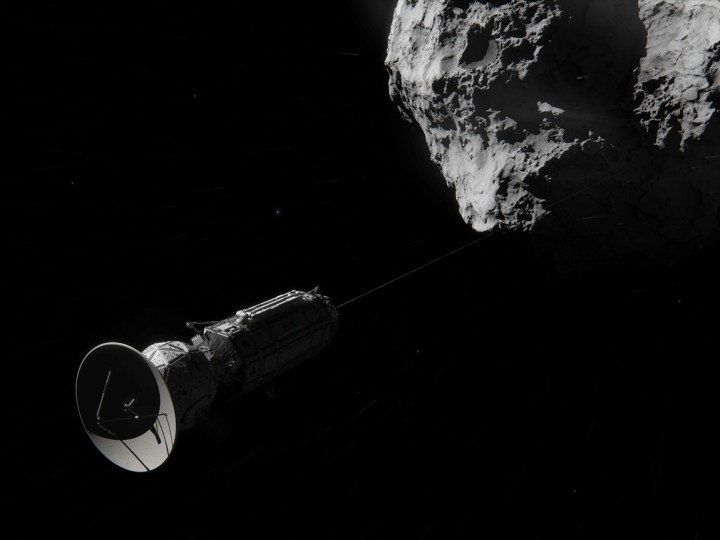
Instead of using costly fuel to accelerate a spacecraft toward a comet or an asteroid, Ono’s proposed system would use a reusable tether system that would capture the comet. While approaching a comet, the spacecraft would release an extendable tether with a harpoon that would attach the craft to the object. The spacecraft then would reel out the tether much like a fisherman slackens and tightens his line when he catches a fish. As the craft begins to accelerate from the force of the moving comet, the spacecraft then can apply a brake and harvest the kinetic energy generated from this resistance.
Ono and his team have calculated what they call the “Space Hitchhike Equation,” a mathematical formula that describes the tether strength, mass of the spacecraft and other variables involved in the hitchhiking process. According to their calculations, the space-based rope would need to be anywhere from 62 to 620 miles long and must be made from a material capable of withstanding extreme tension and heat. Currently, Zylon and Kevlar are the only two materials capable of withstanding one of the slowest comet accelerations of 0.9 miles per second. A faster 6.2 mile-per-second propulsion would require advanced materials such as a carbon nanotube tether paired with a diamond harpoon.
Once the spacecraft is matching the speed of the comet or asteroid, the ship then can start to reel in its tether and inch closer to the asteroid until it is has made a gentle landing. It can stay attached and travel along with the comet as long as needed. When it is time to travel to another object, the craft can use its stored energy to release the tether and propel itself towards its next target.
Editors' Recommendations
- Junk from the ISS fell on a house in the U.S., NASA confirms
- NASA astronauts will try to grow plants on the moon
- NASA’s Crew-7 astronauts splash down safely off the coast of Florida
- Meet NASA’s trio of mini moon rovers set to launch next year
- NASA addresses the crack in the hatch of the Crew-8 spacecraft




